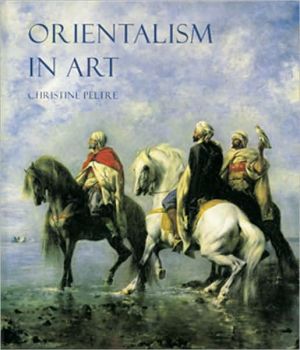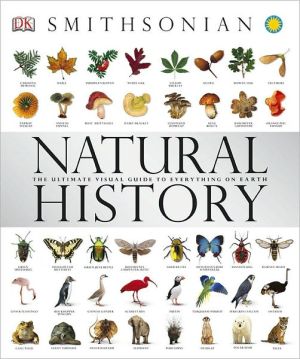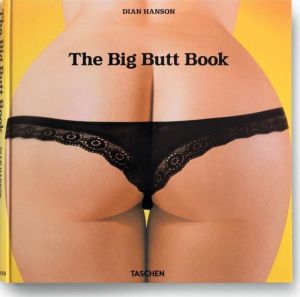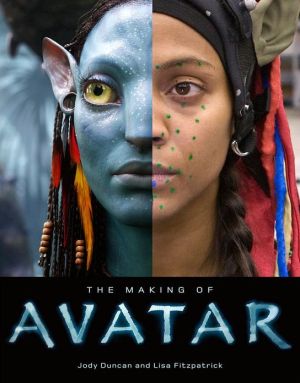Orientalism in Art
Nineteenth-century Europe was fascinated by the Orient. Napoleon's Egyptian campaign of 1798 initiated this phenomenon, and its history-the most notable episodes of which include the Greek uprising against the Turks in 1821 and the French taking of Algiers in 1830-was closely linked to changing attitudes toward the "Eastern question." Artists of the period, too, were captivated by these events, and the rich body of imagery they produced is the subject of this volume.\ \ Incorporating much...
Search in google:
The romance and exoticism of the Orient, as captured by 19th-century European and American painters, are brought to life in this important volume.Library JournalAmong the more remarkable crosscurrents affecting the development of European painting in the 19th and early 20th centuries was the influence of the exotic cultures of the Middle East and North Africa. Initiated by Napoleon's incursion into Egypt in 1798, European artists (both visitors and stay-at-homes) seized on this non-European world to enrich their imaginations and palettes. Peltre's (history of contemporary art, Universite des Sciences Humaines, Strasbourg, France) scintillating overview of Orientalism concentrates largely on the French response but also reaches out to an equally telling but briefer consideration of English, German, Italian, and American work. Without slighting the impact of European imperial ventures, political events, and literary influences, the author convincingly structures her historical synthesis within the broader contours and conventions of European painting. In addition, there are vivid characterizations of works by acknowledged masters like Delacroix, Ingres, and Matisse as well as due consideration of almost innumerable lesser lights like Lewis, Fromentin, and Gerome. Although the sculptural and architectural ramifications of Orientalism are neglected, the excellent text and the plethora of exquisitely reproduced but unfamiliar images are reason enough to acquire this splendid volume.--Robert Cahn, Fashion Inst. of Technology, New York
Introduction\ \ "What can have inspired him to devote an entire volume to promenading through the Orient? What is the meaning of this useless volume of pure poetry, tossed into the middle of the public's grave concerns? . . . Where is the opportunity? What's the sense of it? . . . He will respond that he's at a loss to explain it, that it's an idea that took hold of him, and took hold of him in a rather ridiculous way, last summer, when he was watching a sunset."\ \ In these lines from the preface to Les Orientales, didn't Victor Hugo get to the heart of the matter in 1829? It would be pointless to hold his pleasure against him: for poets and painters, as for their public, the East was a caprice, a voluptuous obsession, an idler's fancy. After so much moonlight, so many tormented nights, there appeared on the scene the passionate sun worshiper who was to serve, until the century's end, as guide for those smitten with light. "I have, so to speak, no nights," noted Eugène Fromentin in Laghouat by way of summing up, long after darkness had descended, the prolonged echoes of his own "solar immersion." The East was a land of fable, of "pure poetry" where nothing had weight, from which gravity had been banished. Isn't gaming the favorite occupation of the Levantines on canvas who so hoard odalisques and Suliots? This enchanted elsewhere remained a theater set, an opera decor, and many of the artists specializing in it seem to have changed their ideas not a whit after having seen it firsthand, continuing to fashion spectacular compositions with sphinxes and minarets. This lightness, already present in eighteenth-century turqueries, was congenial to painting. Watercolor, withits fragile support and delicate effects, was the queen of exoticism, of travel, which sometimes occasioned analogously fragile and touching effects in oils. Could solid and serious things possibly take shape far from home, outside Paris and London? Courbet and Cézanne despised exoticist exercises, deeming them a form of escape. And in the end, how much was known about the Orient? Could one claim familiarity with anything other than the received ideas mouthed by Gustave Flaubert, who maintained, for example, that "all the women there are bayaderes" and that Damascus was "the only place where they know how to make sabers"? That the "desert produces dates" and, finally, that the Koran was the "book of Mohammed, concerned exclusively with women"? The Orient encountered in poetry and painting, then, is pure frivolity; that is its charm and perhaps its aim, something like a harmless and agreeable feminine pursuit. \ \ This lightness is more than a mirage, and it is precisely such shimmering effects that attracted the long caravan of artists constituting pictorial Orientialism. Hugo was not alone in fantasizing about the "golden spires" of Moorish cities: others, too, kept watch over this flame. Théophile Gautier, with his Greek turban and Turkish slippers, cast himself as their pasha. There wasn't a palm tree or a camel, an almah or a fellah, that a visitor to Constantinople and Algeria had not encountered on the walls of the Salon, in a surfeit of celebratory "open windows" onto the "immutable azure," ineffable visions redolent of the Thousand and One Nights.\ \ Such spells, however, do not suffice to explain the amplitude and intensity of the Orientalist tendency that became such a pervasive force in nineteenth-century Western art. Fascination of this kind was not new. Painters had long been receptive to the opulence and strangeness of the East through their attraction to subjects drawn from the Bible and ancient history. This interest is especially apparent in the art of Venice, whose history, from the Crusades to the battle of Lepanto, explains the many portraits of men in turbans. Those by Veronese--the Old Oriental in the Doge's Palace, for example--are among the most seductive. But is not the East also a symbol of that unknown territory, that "other" universe that all artists, and especially painters, seek to explore? The work of Rembrandt, which was to influence the Orientalists so deeply, provides evidence of this. To be sure, the distant commerce of the Dutch merchants who founded first the East India Company, then the West India Company, and the artist's proximity to Amsterdam's Jewish colony, from which he borrowed "a repertory of forms" of exotic character,1 were superficial encouragements. But these counted for less than the inner quest for alterity and color that found its land of preference in that elsewhere whence the sun rose. \ \ Less profound, but more frankly exotic, are the turqueries that became fashionable in the eighteenth century, a vogue that yielded sultans by Boucher and pashas by Fragonard, as well as Montesquieu's Persian Letters (1721) and Mozart's Abduction from the Seraglio (1782). Although these works, too, proposed a most improbable Orient, the sojourns of Western artists in Constantinople would enrich such imagery with plausible visions that proved the foundation of a prolonged infatuation. Among these "painters of the Bosporus," studied in the early twentieth century by the French diplomat Auguste Boppe, it is Jean-Etienne Liotard who produced the most convincing works, including beautiful portraits in Ottoman dress. But we should not underestimate the impact of less well-known artists such as Louis-François Cassas, Jean-Baptiste Hilaire, and Antoine-Ignace Melling, whose works, more subservient to the exigencies of the genre of the travel pictorial, were most familiar to the generations that followed. Eugène Delacroix drew upon these images to irrigate his first exotic intuitions. \ \ No form of expression was impervious to this incremental "unveiling" of the Orient, which in the nineteenth century affected everything from music to architecture, from literature to the decorative arts. In painting, this elsewhere--sometimes called "the East" and sometimes "the Orient"--was a point of convergence of all Western schools. Italy, subject to the dispersion of its artistic centers, vouchsafed the secular opening of Venice to the East, inaugurated by Gentile Bellini, who in 1480 executed a portrait of Sultan Mehmed ii in Constantinople. With its operations in Morocco, Spain--which harbored its own exotic resources in Moorish Andalusia (noted early on by the French and, especially, the English Romantics)--offered to Mariano Fortuny in 1860 a theater of observation that stimulated his colorist vein and prompted other artists to follow in his footsteps. The Germanic countries lagged behind, but Bavarian sovereignty in Greece and Karl Richard Lepsius's archaeological research in Egypt planted the seeds of an interest that was to blossom in a few artists after the great retrospective of Islamic art held in Munich in 1910. Although few American artists visited the Orient prior to the Civil War, after 1865 they made contributions that, while strongly influenced by their French teachers, were not without individuality. But it is now clear that the mainstays of the movement were Great Britain and France, owing largely to the scope of their colonialist ambitions. The "Eastern question," a set of problems spawned by the confrontation of a decadent Ottoman Empire with rival European nations, is effectively at the heart of the subject. It manifested itself in the Egyptian campaign, the war for Greek independence, and relations between Muhammad Ali Pasha and Europe, all of which directly influenced pictorial production. \ \ The active role played by these two countries in this international game of chess underlies the abundance and quality of the Orientalist works they produced, as well as periodic campaigns mounted by their artists to renew the genre. But it is my view that the role of France was crucial, and accordingly it is here given pride of place. Orientalism was exceptionally long-lived there; inaugurated after the Egyptian campaign by students of Jacques-Louis David, it assumed greater scope in the context of the French occupation of Algeria and was reinvigorated by Matisse at the beginning of the twentieth century, when the movement took wind across the channel with the intensive development of colonization. While the Orient, and Egypt in particular, served England as an essential way station on the route to India, France, with its Mediterranean shores, maintained privileged relations with the Muslim world. It is not a matter of chance that the Provençal school headed by Emile Loubon boasted enough artist-travelers to justify an exhibition devoted to them in 1975. These privileged ties are celebrated in the large canvas by Pierre Puvis de Chavannes in the Musée des Beaux-Arts in Marseille (pages 12-13). Dated 1869, the year the Suez Canal was inaugurated, it represents "the generous welcome of a maritime city, Marseille, which is France's gateway to the East."2\ \ In the nineteenth century this openness toward the East found expression in extensive visual records made in situ by a massive exodus of interpreters. To invoke Flaubert again, his notion that in general terms an Orientalist is a "man who has traveled widely" seems pertinent here. There was no Orientialism without travel, even if-as with some painters-it was of the armchair variety. The Ottoman Empire, from Turkey to Egypt and the Danubian Principalities, North Africa, and Persia comprise this more cultural than geographic "Orient," an amalgamation of the Levant (the countries bordering the eastern shores of the Mediterranean) and the Maghreb (the countries of northwest Africa). The exploration of these territories grounded the movement in firsthand observation, thereby distinguishing it from earlier turqueries and linking its development to the shifting horizons of such expeditions. Greece, considered part of the Orient around 1820, interested few artists after the Sinai and Laghouat became accessible to them. These expeditions did more than provide painters with new subjects; they required total commitment and real sacrifices, making them initiations of a kind that left indelible marks. Judging from contemporary observers, the indigenous dress adopted by these artists was often more than mere affectation; it was the new skin of individuals who had seen and retained in their mind's eye the brilliance of African skies and the dignity of Arab chieftains. Such expeditions made it possible to break free of entrenched visual habits, to liberate oneself from the tyranny of the great European museums, sometimes for years at a time (as John Ruskin rightly emphasized in connection with John Frederick Lewis), allowing new perceptions to take root, occasionally without the artist's fully realizing the extent of the transformation.\ \ Art historians have been investigating the complex field of Orientalist imagery for more than half a century. A preliminary assessment was occasioned by the centennial of the siege of Algiers. In 1930 Jean Alazard, then curator of the city's newly established Musée des Beaux-Arts, published L'Orient et la peinture française au XIXe siècle (The Orient and Nineteenth-Century French Painting), a seriously researched synthetic account that remains useful. This volume was soon joined by Jean-Marie Carré's Voyageurs et écrivains français en Egypte (French Travelers and Writers in Egypt, 1932), a study of the phenomenon from a more literary angle. But the disappearance of the movement--the 1914 Tunisian trip of August Macke and Paul Klee was effectively its swan song--and its unpopularity then combined to produce an extended period of silence. "Do not visit the Colonial Exposition"--the famous Surrealist tract of 1931, which denounced the annexation of "vistas of minarets to the delicate landscape of France," initiated a campaign of vilification that was only reinforced by decolonization and further legitimized in 1960, when André Malraux transformed the Musée de la France d'Outre-Mer (Museum of French Overseas Territories) into the Musée des Arts Africains et Océaniens (Museum of the Arts of Africa and Oceania). Thereafter, nineteenth-century artists who had represented the East were regarded as half-blind witnesses to imperialist domination. This idea was developed in the 1980s by Linda Nochlin, who applied to the history of art the thesis developed by Edward Said in his Orientalism (1978), which undertook to expose the trend's ugly side, arguing that the Orient was "a creation of the West."\ \ Since then, exhibitions and publications of all kinds have shed further light on the subject. They provide a solid foundation for reflection, sometimes challenging the dictionary of received ideas that have recently accrued to it. The overview organized by David Rosenthal in New York in 1982 was followed by exhibitions in London (1984), Dublin (1988), and Berlin (1989). Each of these exhibitions increased our knowledge and deepened our understanding of the phenomenon, as have studies focusing on the contributions of specific nations and artists (Kenneth Bendiner on British artists; Gerald Ackerman on Jean-Léon Gérôme). Additional illumination has been provided by literary scholars who have studied the travel accounts of painters and writers. Their more abstract reflections suggest ways that pictorial Orientalism might be approached in terms other than the conventional ones of sparkling light and the languors of the harem. Barbara Wright's work on the double gaze of Fromentin, crowned by her recent publication of his correspondence, is exemplary, demonstrating the gains to be won when lucid and careful analysis of Orientalism prevails over passion, as it should today. \ \ For beyond its facile seductions, the Orient was also a "general preoccupation," as even Victor Hugo admitted in his preface, and the "Eastern question" is no less interesting from an artistic point of view than from a political one. Hugo's text both exemplifies and challenges the Orientalist phenomenon. I examine the successive phases of Orientalist representation more or less chronologically, seeking to illuminate general developmental trends rather than isolated initiatives. Thus I have eschewed an exhaustive panoramic approach, opting instead to stress the key figures. It seemed more important to examine their work than to indulge in a showy exhumation of rarities, for Orientalism is more than an exotic postlude to a chapter in the history of art; it participates fully in the central aesthetic debates of the nineteenth century. \ \ And if for painters--as for art historians--travel is a temptation, perhaps Orientalism speaks more of the here and now than of elsewhere.\
1Witnesses to history, from Alexandria to Biskra192"Haute Poesie", or the orient of the romantics633Realisms1294Studio voyages1835Toward the "Third Style"237Conclusion274Notes277List of Illustrated Works283Bibliography287Indexes291
\ Library JournalAmong the more remarkable crosscurrents affecting the development of European painting in the 19th and early 20th centuries was the influence of the exotic cultures of the Middle East and North Africa. Initiated by Napoleon's incursion into Egypt in 1798, European artists (both visitors and stay-at-homes) seized on this non-European world to enrich their imaginations and palettes. Peltre's (history of contemporary art, Universite des Sciences Humaines, Strasbourg, France) scintillating overview of Orientalism concentrates largely on the French response but also reaches out to an equally telling but briefer consideration of English, German, Italian, and American work. Without slighting the impact of European imperial ventures, political events, and literary influences, the author convincingly structures her historical synthesis within the broader contours and conventions of European painting. In addition, there are vivid characterizations of works by acknowledged masters like Delacroix, Ingres, and Matisse as well as due consideration of almost innumerable lesser lights like Lewis, Fromentin, and Gerome. Although the sculptural and architectural ramifications of Orientalism are neglected, the excellent text and the plethora of exquisitely reproduced but unfamiliar images are reason enough to acquire this splendid volume.--Robert Cahn, Fashion Inst. of Technology, New York\ \








